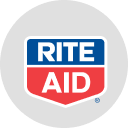
Duragesic-100 Coupons & Savings Card – Discount Prices from $176.61
fentanyl
My prescription
Edit
100MCG/HR, Fentanyl (30 Patch 72 Hours)
Select pharmacy

CVS
$185.61
COUPON PRICE
Walgreens
$176.61
COUPON PRICE
Rite Aid
$504.39
COUPON PRICE
Albertsons
$602.74
COUPON PRICEDuragesic-100 savings card
Show this card to your pharmacist
Walgreens
$176.61
BIN
ID
PCN
GRP
019876
LH9E5E3646
CHIPPO
LHX
Powered by
Duragesic-100 dosage forms
| Dosage | Quantity | Price from | Per unit |
|---|---|---|---|
| 100MCG/HR | 30 Patch 72 Hours | $185.61 | $6.19 |
Duragesic-100 Warnings
Fentanyl is a potent opioid medication with significant risks and precautions that must be adhered to for safe use. Below are critical safety guidelines and warnings associated with its use:
Risk of Abuse and Addiction: Fentanyl has a high potential for misuse, which can lead to addiction, overdose, and potentially fatal respiratory issues. Use only as prescribed and store securely to prevent theft or misuse.
Severe Breathing Problems: Fentanyl can cause life-threatening respiratory depression. This risk is heightened when starting the medication, changing doses, or using it improperly. Contact emergency services if you notice symptoms such as slow or shallow breathing, extreme drowsiness, or difficulty waking.
Interactions with Alcohol and Drugs: Combining fentanyl with alcohol or other substances that cause drowsiness can lead to serious adverse effects, including respiratory depression and death. Avoid these combinations and consult your healthcare provider before starting new medications.
Proper Use of Transdermal Patches: Only use fentanyl transdermal patches if you have been regularly using opioids. Do not use them for mild, short-term, or postoperative pain. Follow the instructions carefully and avoid exposing the patch to heat to prevent overdose.
Special Populations: Pregnant women should only use fentanyl when absolutely necessary, as it may harm the unborn baby or cause withdrawal symptoms after birth. Fentanyl is not recommended for children under 18 or in individuals not opioid-tolerant.
Drug Interactions: Inform your healthcare provider of all medications you are taking, as fentanyl can interact with drugs that influence serotonin levels or affect its metabolism, leading to serious conditions such as serotonin syndrome.
Emergency Measures: Keep naloxone available to reverse opioid overdose effects, and ensure family members know how to use it. In case of overdose symptoms, use naloxone and contact emergency services immediately.
Physical Dependence and Withdrawal: Long-term use can lead to physical dependence, with withdrawal symptoms if stopped abruptly. Consult your healthcare provider for a gradual discontinuation plan if needed.
Storage and Disposal: Store fentanyl patches securely and dispose of them properly to prevent accidental exposure, especially to children and pets.
Contraindications: Do not use fentanyl if you experience conditions such as severe asthma, respiratory depression, or gastrointestinal blockages, or if you are not already opioid-tolerant.
Always consult your healthcare provider if you have any concerns or experience adverse effects while using fentanyl.
Duragesic-100 Side Effects
When using this medication, you may experience some common side effects such as nausea, vomiting, sleepiness, dizziness, and trouble sleeping. These effects are generally mild but if they persist or worsen, it's important to consult your healthcare provider. Additionally, some individuals may encounter constipation, excessive sweating, tiredness, or feeling cold.
Other side effects that have been reported include headaches, diarrhea, stomach pain, dry mouth, fast heartbeat, a general feeling of being unwell, weakness, muscle spasms, and numbness or tingling in the arms or legs. It's also possible to experience itching, rashes, anxiety, and confusion. While these effects may cause discomfort, they are not usually serious. However, if they become severe, you should contact your healthcare provider.
It's crucial to be aware of serious side effects that, although rare, require immediate medical attention. These include dangerously slow breathing, which may manifest as trouble breathing or bluish-colored lips, fingers, or toes. An overdose can result in extreme sleepiness, slowed breathing, and cold or clammy skin. Symptoms of opioid withdrawal, such as anxiety, restlessness, or suicidal thoughts, also warrant urgent care.
A severe allergic reaction is another serious concern, characterized by itchy, red rashes (hives), shortness of breath, chest tightness, or swelling of the lips, tongue, throat, face, or eyes. If any of these occur, seek emergency medical help immediately. Always ensure to discuss any other medications you are taking with your healthcare provider to avoid increasing the risk of serotonin syndrome, which could present with symptoms like fast heartbeat, hallucinations, or severe dizziness.
Duragesic-100 Interactions
When using Fentanyl, it's crucial to be aware of potential interactions with other medications. Certain pain medications like Butorphanol, Nalbuphine, and pentazocine, as well as Naltrexone and samidorphan, can interact with fentanyl. Additionally, drugs that influence fentanyl's removal from the body, such as azole antifungals (Itraconazole, Ketoconazole), calcium channel blockers (diltiazem, Verapamil), HIV protease inhibitors (nelfinavir), macrolide antibiotics (Erythromycin), and certain seizure medications (Carbamazepine, Phenytoin), may affect how fentanyl works.
Using MAO inhibitors with fentanyl can lead to dangerous, potentially fatal interactions. It's important to avoid MAO inhibitors like isocarboxazid, Linezolid, methylene blue, phenelzine, and others, during treatment with fentanyl. Consult your doctor on when to begin or discontinue these drugs, as most MAO inhibitors should not be used for two weeks before starting fentanyl.
The risk of severe side effects, including respiratory issues and extreme drowsiness, increases when fentanyl is combined with other substances that cause drowsiness or breathing problems. These include other opioid medications, alcohol, cannabis, sleep or anxiety drugs (such as Alprazolam, Lorazepam), muscle relaxants (like Carisoprodol), and antihistamines (such as Cetirizine, diphenhydramine). Check all your medicines for ingredients that could cause drowsiness, and consult your pharmacist for safe usage.
There is also a risk of serotonin syndrome when fentanyl is taken with drugs that boost serotonin levels, such as MDMA, St. John's wort, and certain antidepressants (SSRIs like Fluoxetine, SNRIs like Duloxetine). This risk is higher when starting or increasing the dose of these drugs.
Finally, fentanyl may affect the results of specific lab tests, such as those measuring amylase/lipase levels, potentially leading to false results. Ensure that all healthcare providers and laboratory personnel are aware of your fentanyl use. Always inform your doctor and pharmacist about all medications and supplements you are taking to avoid possible interactions.
Is DURAGESIC still available?
Yes, DURAGESIC, which is a brand name for the fentanyl transdermal patch, is still available. It is used for managing severe chronic pain in patients who require continuous opioid analgesia.
Is Duragesic discontinued?
Duragesic, a brand name for the fentanyl transdermal patch, has not been discontinued. However, availability may vary based on location and specific formulations. It is important for patients to consult with their healthcare provider or pharmacist for the most current information regarding its availability.
Is Duragesic a schedule 2 drug?
Yes, Duragesic, which contains fentanyl, is classified as a Schedule II controlled substance in the United States. This classification indicates that it has a high potential for abuse, with use potentially leading to severe psychological or physical dependence.
